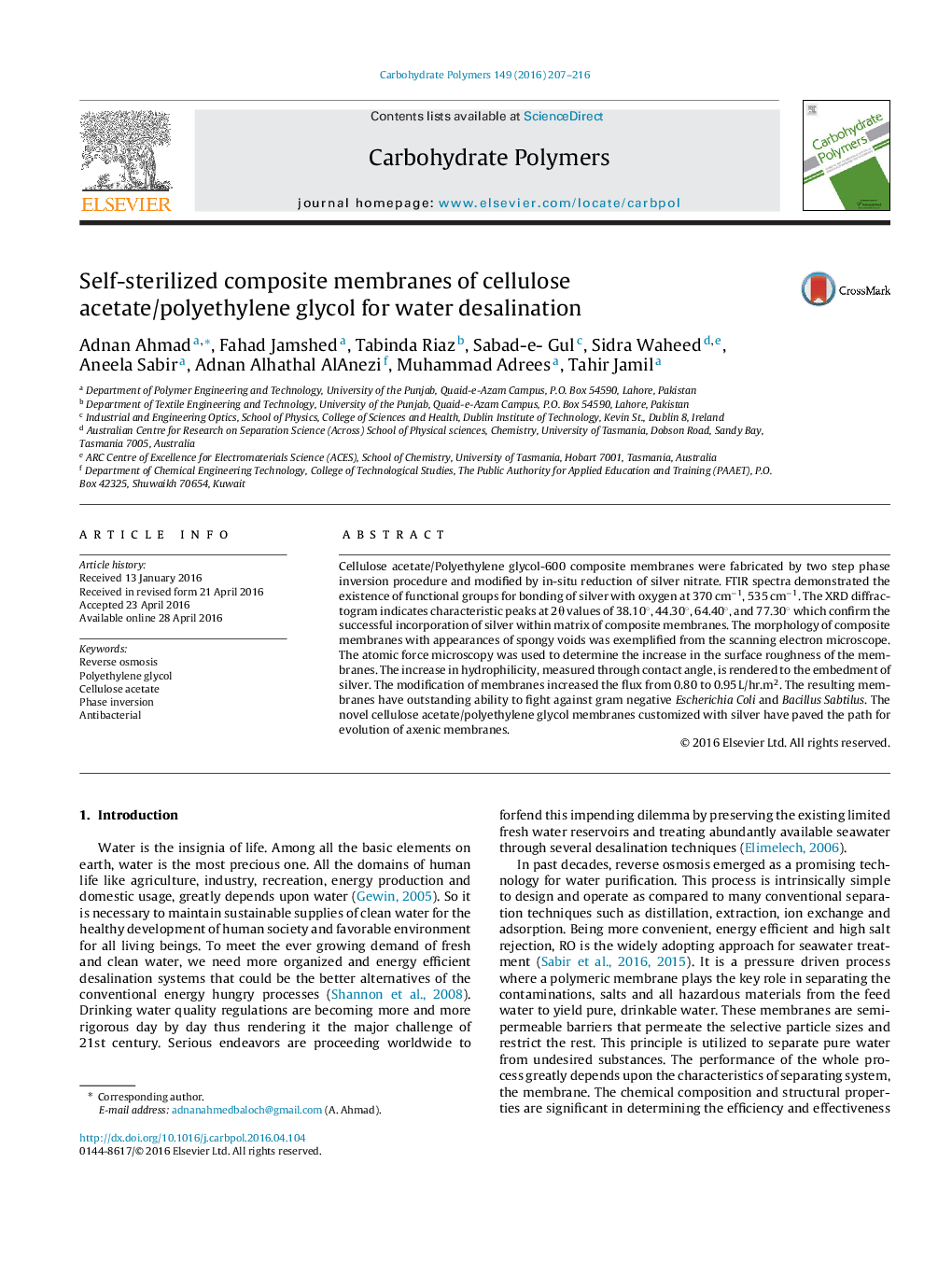| Article ID | Journal | Published Year | Pages | File Type |
|---|---|---|---|---|
| 7785427 | Carbohydrate Polymers | 2016 | 10 Pages |
Abstract
Cellulose acetate/Polyethylene glycol-600 composite membranes were fabricated by two step phase inversion procedure and modified by in-situ reduction of silver nitrate. FTIR spectra demonstrated the existence of functional groups for bonding of silver with oxygen at 370 cmâ1, 535 cmâ1. The XRD diffractogram indicates characteristic peaks at 2θ values of 38.10°, 44.30°, 64.40°, and 77.30° which confirm the successful incorporation of silver within matrix of composite membranes. The morphology of composite membranes with appearances of spongy voids was exemplified from the scanning electron microscope. The atomic force microscopy was used to determine the increase in the surface roughness of the membranes. The increase in hydrophilicity, measured through contact angle, is rendered to the embedment of silver. The modification of membranes increased the flux from 0.80 to 0.95 L/hr.m2. The resulting membranes have outstanding ability to fight against gram negative Escherichia Coli and Bacillus Sabtilus. The novel cellulose acetate/polyethylene glycol membranes customized with silver have paved the path for evolution of axenic membranes.
Related Topics
Physical Sciences and Engineering
Chemistry
Organic Chemistry
Authors
Adnan Ahmad, Fahad Jamshed, Tabinda Riaz, Sabad-e- Gul, Sidra Waheed, Aneela Sabir, Adnan Alhathal AlAnezi, Muhammad Adrees, Tahir Jamil,
